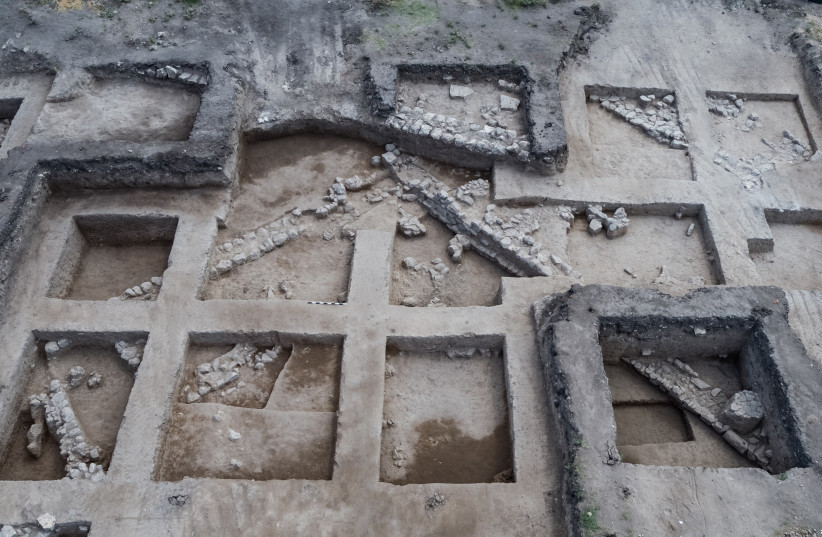We know well how modern warfare in this region is carried out – with guided missiles, mortars, rockets, thermobaric grenades, anti-tank explosives, and drones, among others. We know that David, who became king of Israel, used a slingshot against Goliath when he was a youth and other weapons used were bows and arrows, swords, spears, javelins, hammers, and axes.
Now, archaeology researchers at the Israel Antiquities Authority (IAA) have published research covering 22 pages of their journal Atiqot 111 that has exposed the earliest evidence of warfare and organized arming in the Southern Levant as long as 7,200 years ago. They reported that even then, there was large-scale systematic production of war weapons in the country.
Entitled “Up in Arms: Slingstone Assemblages from the Late Prehistoric Sites of ‘En Zippori and ‘En Esur,” it was published by Gil Haklay, Hendrik (Enno) Bron, Dina Shalem, Ianir Milevski, and Nimrod Getzov.
The earliest slingstones were varied, because they were natural water-worn pebbles apparently used as sling projectiles in the region. They disappeared and later reappeared in the archaeological record of the Southern Levant only in the Hellenistic period, in the form of biconical slingstones of rather similar dimensions and form.
The IAA team examined 424 slingstones from the Early Chalcolithic period (about 5800 to 4500 BCE) that were uncovered at two large IAA archaeological sites – at ‘En Esur in the northern Sharon plain at the outlet of Nahal Iron and at ‘En Zippori in the Lower Galilee between the Nahal Zippori stream and Givat Rabi (Jebel el-Ayn). The research disclosed that the hundreds of slingstones were almost identical – manufactured from hard limestone/dolomite, and they were almost all uniform in size, with an average length of 52 mm., a width of about 321 mm., and weighing, on average, 60gm.

Earliest evidence of warfare in the Southern Levant
“The stones that were intended to be projected from a sling are smoothed, with a specific biconical aerodynamic form, enabling exact and effective projection,” explained the archaeologists. “Similar slingstones have been found at other sites in the country, mainly from the Hula Valley and the Galilee in the north to the northern Sharon, but this is the first time that they have been found in excavations in such large concentrations.”
“These stones are in fact, the earliest evidence of warfare in the Southern Levant. The similarity of the slingstones points to large-scale industrial production. The effort put into the aerodynamic form and the smoothing of the stones’ surface indicate that they were intended to be exact and deadly weapons,” the researchers added. “The large quantity of slingstones and the effort put into producing them point to organized preparation for battle, and it may have been a community effort to produce ammunition.”

If this is true, it seems that in the Early Chalcolithic period, there was an escalation in preparations for warfare that involved a change from individual to large-scale production, employing many people, the team suggested. “The large concentration of slingstones provides evidence for the more intensive preparations for warfare in the Early Chalcolithic period in our region, possibly between local powers.”
IAA director-general Eli Escusido concluded that “yet again, archaeology teaches us that history does repeat itself. Our researchers’ understandings open a window to a deeper understanding of the life and relationships between groups of people in prehistoric periods.”
